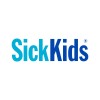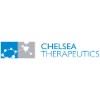
A Randomized, Double-Blind Comparison of Placebo and Atomoxetine Hydrochloride Given Once a Day...
Attention Deficit Hyperactivity DisorderThis is a parallel design, double-blind, placebo-controlled, multi-center, 38-week treatment trial of atomoxetine in adults with attention deficit hyperactivity disorder (ADHD) who are currently living in a family situation with at least one child. The primary objective of the study is to demonstrate the efficacy of atomoxetine compared to placebo in the reduction of ADHD symptoms over 12 and 24 weeks of blinded treatment.

Long-Term Study of Atomoxetine in Children With Attention-Deficit/Hyperactivity Disorder (AD/HD)...
Attention Deficit Hyperactivity DisorderThe study is long-term extension study to evaluate long-term safety and efficacy of Atomoxetine in Japanese pediatric patients with Attention-Deficit/Hyperactivity Disorder (AD/HD).

Study of Atomoxetine in Children With ADHD to Assess Symptomatic and Functional Outcomes
Attention-Deficit/Hyperactivity DisorderThe purpose of this study is to assess whether changes in the symptoms of ADHD show a relationship with changes in functioning in children with ADHD treated with atomoxetine over a 3-month period.

An Open-Label Study of Atomoxetine in Adolescents With Attention-Deficit/Hyperactivity Disorder...
Attention Deficit Hyperactivity DisorderA single arm, open-label, phase 3 multicenter study to evaluate the effectiveness and tolerability of atomoxetine (given once daily, target dose 1.2 mg/kg/day), as perceived by patients, parents and physicians, and its impact on self-esteem in adolescents (aged 12 through 17 years) with Attention-Deficit/Hyperactivity Disorder treated as outpatients in Germany. An 8-week treatment phase is followed by a 16-week extension period.

Stimulant Versus Nonstimulant Medication for Attention Deficit Hyperactivity Disorder in Children...
Attention Deficit Disorder With HyperactivityThis study will determine the effectiveness of stimulant and nonstimulant medication in treating the symptoms of attention deficit hyperactivity disorder (ADHD) in children and adolescents.

Social Skills Training and Standard Treatment Versus Standard Treatment of Children With Attention...
ADHDAttention Deficit Hyperactivity DisorderThe primary purpose of the trial is to examine the effect of the combination of social skills training, parental training and standard treatment versus standard treatment in ADHD patients. The secondary purpose is to examine differences in the effect of the treatment in relation to the different competences of attachment: secure attachment: unsecure dismissing, unsecure preoccupied or disorganized attachment and in the categories; emotional openness, balance of positivity / negativity to attachment figure/s, idealisation of attachment figure/s, dismissal and/or derogation of attachment, the ability of conflict resolution, disorganisation and coherence of the narrative description. The tertiary purpose of the trial is to examine differences in the effect of the treatment in relation to the degree of parents symptoms of ADHD.

Effects Of A Computerized Working Memory Training Program On Attention, Working Memory, And Academics,...
Attention Deficit Disorder With HyperactivityLearning DisordersOur primary aim is to determine whether a computerized working memory (WM) training program will help students with severe learning and attention problems, in terms of improving their WM. Additional aims are to determine whether the WM training will also result in improvements in the students' concentration and school work, and how long any beneficial effects will last (i.e., whether the students will continue to show improvements once the training program has stopped).

An Efficacy Study of Osmotic Release Oral System (OROS) Methylphenidate in Participants With Attention-Deficit/Hyperactivity...
Attention Deficit Disorder With HyperactivityThe purpose of this study is to evaluate the efficacy, tolerability and effects of Osmotic Release Oral System (OROS) methylphenidate hydrochloride (HCl) on learning skill changes in Korean participants with Attention-Deficit Hyperactivity Disorder (ADHD).

Study of Droxidopa Treatment in Adults With Attention Deficit Hyperactivity Disorder With Co-administration...
Attention Deficit Hyperactivity DisorderAttention Deficit Hyperactivity Disorder (ADHD) is a neurobiological disorder characterized by lifelong issues of inattention, distraction, organizational difficulties, forgetfulness, restlessness, talking out of turn, difficulty waiting and interrupting others. ADHD is the second most common neuropsychiatric disorder affecting 4.4% of the US adult population, or between 8-9 million individuals (Kessler et al., 2006). Droxidopa (L-dihydroxyphenylserine (L-DOPS)) is a synthetic catecholamine which is converted to norepinephrine (NE) via decarboxylation, resulting in increased levels of NE centrally in the CNS and peripherally. Co-treatment with carboxylase inhibitors, such as carbidopa, given with droxidopa, can increase the CNS levels of NE with greater crossing of the blood-brain barrier. Droxidopa has received orphan drug approval by the FDA for the treatment of symptomatic neurogenic orthostatic hypotension in individuals with primary autonomic failure. The half-life of droxidopa is approximately 2-3 hours, resulting in administration thee times daily. As adult ADHD is characterized as a disorder of decreased NE activity in the pre-frontal cortex, it is hypothesized that treating patients with droxidopa (in co-administration of carbidopa) will have a positive effect on adult ADHD.

Study of Medication Patch to Treat Children Ages 6-12 With ADHD
ADHDAttention Deficit Hyperactivity DisorderThe purpose of this study is to investigate the effectiveness of a medication skin patch called Methylphenidate Transdermal System (MTS). We will compare the MTS medicated patch to a placebo patch. We want to find out how well it treats ADHD during the early morning hours before a child leaves for school or summertime routines.
